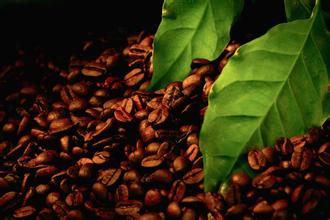How often does coffee tree bear fruit Flavor Description Taste Manor Area Variety Features Introduction
Description of Flavor and Flavor of Coffee trees at regular intervals introduction to the characteristics of varieties in manor producing areas
BORBON originated from La Reunion, a small island near Europe-Mozambique. It is adjacent to Madagascar, commonly known as Spice Island. Because BORBON tree is sensitive to insects and bacteria, it is a vulnerable tree species, but its yield is high, so it needs special care. It is more suitable for planting in high-latitude mountain areas, but it is not easy to resist diseases when planting on lowland. Because of this, when the tree type is wide-spreading (outward extension), the plant spacing is wider, so more land space is needed to achieve yield. BORBON coffee beans have a very smooth appearance and good appearance, with a very high-quality coffee quality and taste balance, is the perfect combination of all kinds of coffee! The overall texture is pleasant and charming; it can make a cup of coffee give off a lingering aftertaste, which is most suitable for a person to carefully taste it alone, and is as famous as its American famous BORBON whisky for its smoothness, smoothness and sweetness.
The flowering period of the coffee tree is very short. These beautiful flowers will wither in about 3 days, wither in a week, and then leave small fruit. Arabica coffee flowers, pistils and stamens are in the same flower, so they can be fertilized without the help of wind or insects
And bear fruit. At first, the fruit was small and cyan, and as the fruit matured and grew bigger day by day, the color became red (some fruits were yellow due to different varieties). Then came the harvest season that we had been waiting for for a long time.
People on the plantation will fertilize and prune the harvested land to prepare for the harvest of coffee beans in the coming year. When people take the coffee beans out of the fruit, they will take the rest of the fruit
The harvest time of coffee varies from region to region. Regions north of the equator (such as Ethiopia and Central America) are generally harvested from September to November. South of the equator, such as Brazil and Zimbabwe, although the harvest can last until August, the main one is in April or May. Countries in the equatorial region, such as Uganda and Colombia, can harvest all year round, especially those plantations that can make good use of different elevations. As a result, there may be new coffee beans for most of the year.
Coffee fruits should be harvested immediately, and it is not easy to harvest coffee fruits at different ripening stages on the same tree. Generally speaking, it takes as long as 4-5 months to receive a full harvest from the initial harvest. If ripe and immature fruits are harvested at the same time, the quality of coffee will be reduced. Therefore, high-quality coffee is picked one by one by hand to maintain the perfect taste of the coffee.
Within a year, a typical Arabica coffee tree picks less than 5 kilograms of fruit and can be made into about 1 kilogram of coffee beans.

Important Notice :
前街咖啡 FrontStreet Coffee has moved to new addredd:
FrontStreet Coffee Address: 315,Donghua East Road,GuangZhou
Tel:020 38364473
- Prev

Introduction to the video tutorial on the correct method of diagramming the skills of milking coffee
The correct method of coffee foaming skills video tutorial introduction 1, choose whole milk, only whole milk can make the perfect foam. 2. The coffee machine must be preheated. Only when the steam temperature and pressure of the coffee machine are under certain conditions can the delicate foam be made. 3. Milk must not be foamed milk. Beaten milk can be hung and mixed with new milk. four
- Next

How much coffee is processed by a coffee tree per season?-how to transplant a famine coffee tree
Average amount of coffee processed by a coffee tree per season-how do famine coffee trees transplant authentic coffee experts say that the dryness of coffee beans must be controlled when drying coffee beans, so as to ensure the strong aroma of coffee. Coffee beans contain 11%-12% moisture is the best. Too dry will make the coffee beans very fragile, leading to a change in quality, if not to the desired degree of dryness, then
Related
- What brand of black coffee is the most authentic and delicious? what are the characteristics of the flavor of the authentic Rose Summer Black Coffee?
- Introduction to the principle and characteristics of the correct use of mocha pot A detailed course of mocha pot brewing coffee is described in five steps.
- Which is better, decaf or regular coffee? how is decaf made?
- How much is a bag of four cat coffee?
- How about four Cat Coffee or Nestle Coffee? why is it a cheap scam?
- Which is better, Yunnan four Cats Coffee or Nestle Coffee? How about cat coffee? is it a fake scam? why is it so cheap?
- How about Cat Coffee? what grade is a hoax? which instant coffee tastes better, four Cat Coffee, Nestle Coffee or G7 coffee?
- Process flow chart of coffee making-Starbucks coffee making process what coffee tastes good at Starbucks
- The top ten best coffee beans in the world Rose summer coffee or Tanzanian coffee tastes good
- Yunnan four cat coffee is good to drink?_four cat coffee is a big brand? four cat blue mountain coffee is fake?

